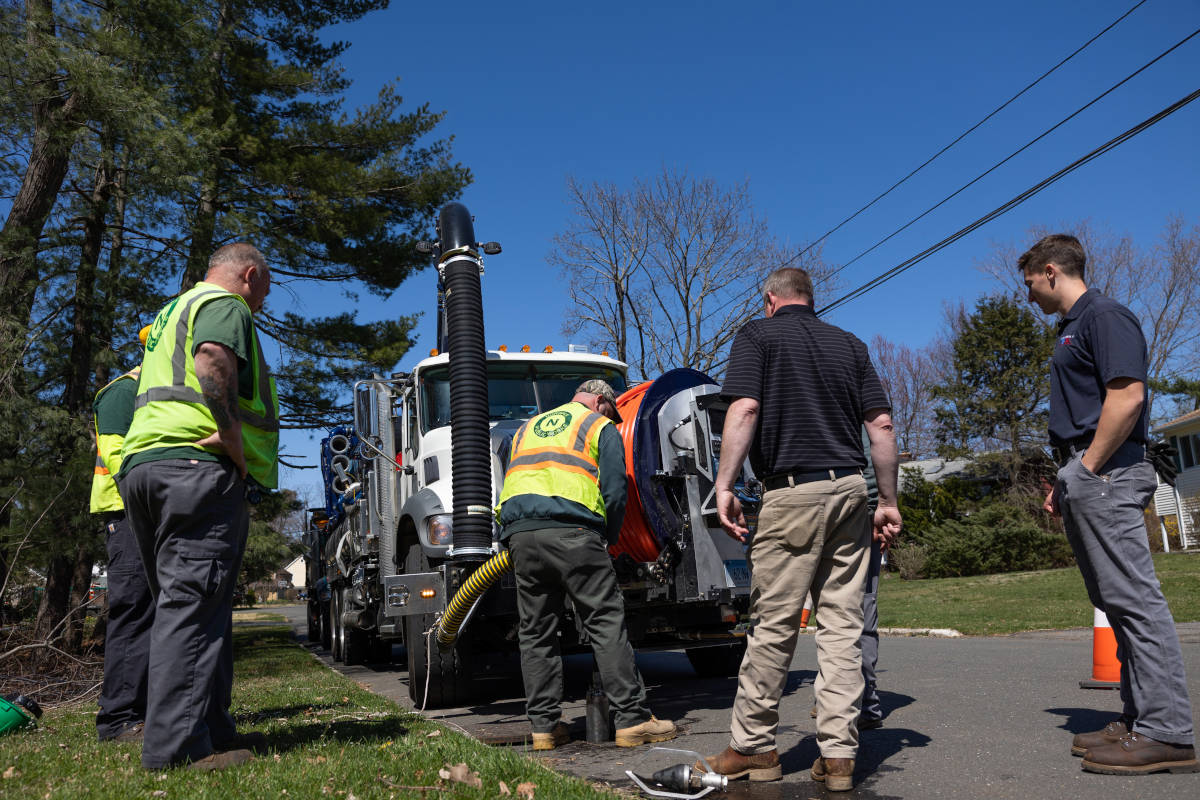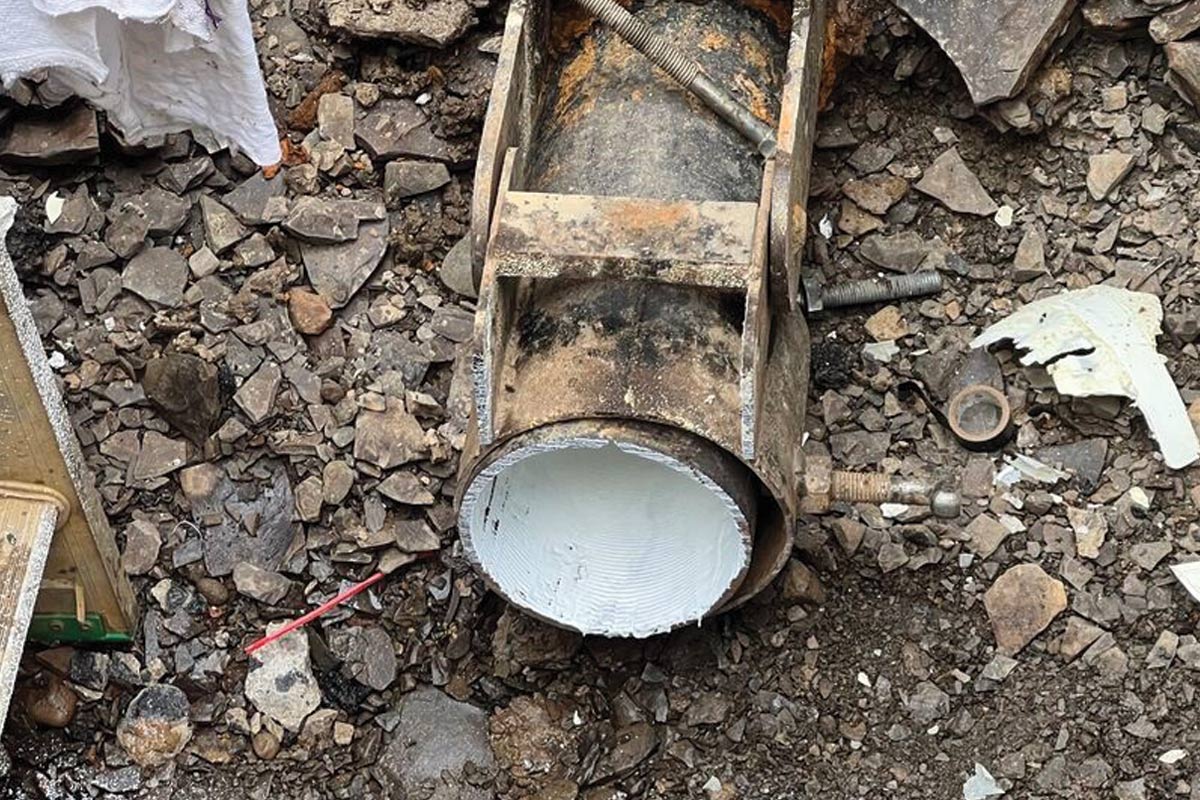
Crossing the Schuykill River via HDD: Extensive Planning, Adjustments and Finally Success
As all horizontal directional drilling (HDD) contractors know, you don’t really know what you’re getting into until you put the bit in the ground.
A full redesign, monitoring soil settlement, and encountering wood and other debris downhole were only a few of the challenges Carson Corp., of Lafayette, New Jersey, encountered on this project crossing the Schuylkill River in South Philadelphia, Pennsylvania.
The 1,320-ft crossing of the Schuylkill River was part of a larger collaboration between the Carson Trenchless and Civil Construction Divisions to improve the SEWPCP Sludge Force Main system. The Carson trenchless team would be fusing and installing a 36-in. HDPE casing via HDD, which would house two 10-in. HDPE sludge force main pipes. Beyond the pipe fusion and HDD, Carson needed to prepare for the multitudes of additional requirements outlined in the contract documents, as well as react to unanticipated difficulties during construction.

The initial design of the crossing was deemed not favorable due to a lack of information related to both the required drill parameters and existing piles and bulkheads on either side of the river. The Carson engineering team completed an extensive survey and redesign of the trenchless crossing. The drill alignment was adjusted to split a 20-ft gap in existing H-piles, approximately 1,000-ft out from the entry point. Additionally, the profile was deepened to allow for sufficient separation between existing bulkheads while staying above the bedrock. Finally, installation force calculations were completed to ensure the integrity of the casing and product pipes would not be impacted during the installation.
Concurrently with the redesign, the operations team, led by Trenchless Division vice president Colin Harris and project manager Nate Hubbard, focused on obtaining approvals from various agencies, as well as developing plans to satisfy the additional requirements on the construction side. In addition to the basic breakover, traffic control, soil management, and testing plans, Carson had to provide a detailed settlement monitoring plan to measure any settlement that may occur during the HDD installation. The settlement monitoring process consisted of measuring elevations at 18 locations along the alignment in order to check if any settlement occurs due to the HDD process.
After all plans were approved and all pre-construction activities completed, casing installation could commence. Carson installed a 60-in. steel conductor barrel casing to a depth of 25-ft below ground surface which meant installing approximately 120-ft of centralized casing. The casing served to mitigate any inadvertent release of drilling fluid, as well as the risk of settlement throughout the shallow portion of the HDD.
Upon completion of casing installation, one of Carson’s three American Auger 440s was rigged up at the entry point. The bottom hole assembly consisted of a 10.625-in mill tooth bit and Carson’s Vector Magnetics Paratrack2 system and gyro module. The pilot hole was completed efficiently in approximately four shifts. After the completion of the pilot hole, Carson’s American Auger 210 was moved into place on the exit side to act as a catch rig, ensuring consistent torque and face pressure on the reamers during the hole opening passes. The original execution plan for the reaming phase consisted of three hole opening passes of 24 in., 36 in. and 48 in.
During the reaming phase, subsurface conditions varied slightly from what was expected in addition to encountering wood and other debris throughout the alignment. Due to these factors, Carson adjusted the drilling plan slightly to ensure the crossing was a success. The first was to perform planned tooling trips where the reamer was tripped out of the borehole. This process helped to clear the reamer of any blockage and remove any debris that had settled in the bottom of the borehole. The second adjustment was to complete an additional ream pass, bringing the final borehole size up to 54-in. The larger ream size served to both add additional clearance for the casing pipe and to clear additional debris from the borehole. After the ream passes were completed, a swab pass was completed to clean the borehole and preparation for pullback commenced.

Prior to pullback, Carson’s certified fusion crew fused the pipe and strung it out into two strings in a nearby paved area. The actual stringing alignment required clearing and grubbing including the construction of an air bridge over a nearby roadway perpendicular to the pipe stringing alignment. Timed perfectly with the completion of the swab pass, the pipe was pulled into the stringing alignment and connected to the drill string for installation. Buoyancy control was utilized to reduce the calculated pull forces on the 36-in. casing pipe and to smooth out the installation process.
Another unique caveat, due to all agencies and stakeholders involved, pipe pull needed to start Saturday evening and be complete before Monday. Timing worked out and pipe pull started late in the afternoon and was completed early in the morning the following day without issue. The only downtime Carson experienced during pullback was due to one mid-fuse completed during pull back operations.
The Schuylkill River Crossing was very involved from start to finish both from a planning aspect and from having to react to surprise conditions while drilling. The Carson team had nothing to complain about in the end as the project was completed on schedule and under budget. Carson CEO Bryce Carson applauded superintendent Sam Hays and the Carson field personnel for being able to make adjustments in the field to ensure a successful installation.
This article was provided by Carson Corp.




